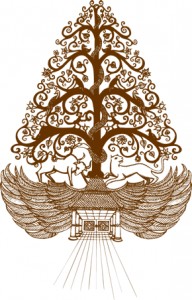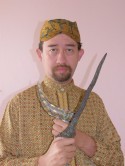Wayang Kulit in Central Java
 "Kesenian dan Kebudayaan harus mendapat perhatian sepenuhnya. Karena betapa tawarnya suatu negara, apabila seni dan budaya tidak mendapatkan perhatian." - Eyang R.A. Kosasih
"Kesenian dan Kebudayaan harus mendapat perhatian sepenuhnya. Karena betapa tawarnya suatu negara, apabila seni dan budaya tidak mendapatkan perhatian." - Eyang R.A. Kosasih
Wayang Kulit in Central Java is probably one of the oldest continuous traditions of storytelling in the world, and certainly among the most highly developed. Wayang Kulit is a flat or round puppets used for shows in Java.The wayang kulit is the flat one and it is made with buffalo leather. They are manipulated behind a white screen with a back light, so the attendance can see them as shadow puppets. Wayang is well integrated in Javanese society, and it is considered to be a highlight of Javanese culture. Wayang Kulit was already established in the East Javanese kingdoms thousand years ago.
Wayang is a Javanese word meaning "shadow" or "ghost", kulit means "leather", and added together "shadow from leather". By extension Wayang is a theatrical performance of living actors (wayang orang), three dimensional puppets (wayang golek) or shadow images projected before a backlit screen (wayang kulit). The wayang kulit use two-dimensional puppets chiseled by hand of buffalo or goat parchment; like paper dolls, but with arms that swivel.
A wayang kulit puppet is a stylized exaggeration of a human shape. Of the many different style of wayang kulit, by far the most popular is the form practiced in Central and East Java, the most populated island of Indonesia. It tells stories mostly from Indian epics Ramayana and Mahabharata, but they were transformed by generations of Javanese tellers.
In 2003 the UNESCO proclaimed the Wayang puppets Theater of Indonesia as a "Masterpiece of the Oral and Intangible Heritage of Humanity". The related action plan recommends that specialized schools play a greater role in the transmission of traditional skills linked to wayang and that support be provided to enable puppeteers to earn a living as professional performers. The plan also calls for the creation of inventories, publications, audio-visual recordings and seminars designed to encourage research
sumber: http://bharatayudha.multiply.com/

